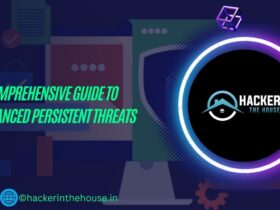Imagine waking up in the morning to find your email account hacked, your personal messages exposed, and your sensitive data compromised…?
The importance of protecting online identities and sensitive information cannot be overstated with the rise of data breaches and cyberattacks, the need for robust authentication methods is more important than ever. That is where Two-Factor Authentication came into the picture to protect sensitive information.
What is Two-Factor Authentication?
Two-Factor Authentication (2FA) is a security process that requires two different methods of verifying a user’s identity before granting access to a system, application, or online account. Its purpose is to enhance security by adding an extra layer of protection besides just a password.
In simpler terms, 2FA can be considered a double-lock system, where the user is required to provide not just a password but an additional piece of information, making unauthorized access significantly more challenging.
Why to OPT in 2FA?
It improves security and helps protect sensitive information and accounts from unauthorized access, by reducing the risk of data breaches and identity theft. Moreover, if an attacker has the password, they would still need access to the user’s physical device or biometric data to access it, which makes unauthorized access much more difficult.
How 2FA actually works?
2FA is an extra layer of security that makes sure that people trying to gain access to their accounts safely first, a user has to enter a username and password and then, instead of immediately having access to an account, again they need to provide another piece of information i.e, “second factor of Identification”.
second factor of identification can be:
- Something You Know: This is the traditional factor, like a password or a PIN.
- Something You Have: This is a physical device or item the user possesses, such as a smartphone, security token, or smart card.
- Something You Are: This involves biometric information, such as fingerprints, retina scans, or facial recognition.
Advantages of 2FA :
The advantages of 2FA extend beyond the security enhancement:
- Reduces Unauthorized Access: 2FA is an effective barrier against unauthorized entry, deterring potential attackers even if they manage to uncover the user’s password.
- Enhanced Security: By implementing 2FA, individuals and organizations establish a stronger defense mechanism against cyber threats, ensuring their sensitive data remains confidential.
- Mitigates Password Vulnerabilities: As password breaches continue to be a prevalent issue, 2FA mitigates the impact of such breaches by requiring an additional layer of authentication.
- Protection from Phishing: Traditional phishing attacks that manipulate users into revealing passwords are less effective against 2FA. Even if a user divulges their password, the second factor remains a roadblock.
- Employee Security: In a corporate setting, 2FA safeguards sensitive company data by necessitating dual authentication, minimizing the risk of insider threats.
- Fast Recovery: In the unfortunate event of a breach, 2FA can expedite recovery and limit damage, as unauthorized access is significantly impeded.
Finally, As technologies have rapid change and continue to evolve, the necessity of protecting online data is an important task. Two-factor authentication stands as a beacon of hope in the domain of cybersecurity by providing a powerful shield against unauthorized access and data breaches and individuals or organizations can make a more secure digital future, where their identities and information remain strongly under their control.










👌
Short and sweet info, very well conveyed. 👏🏻
Hi Umar,
Thanks for your feedback!! Glad to know that it was clear and concise 🙌🏻.